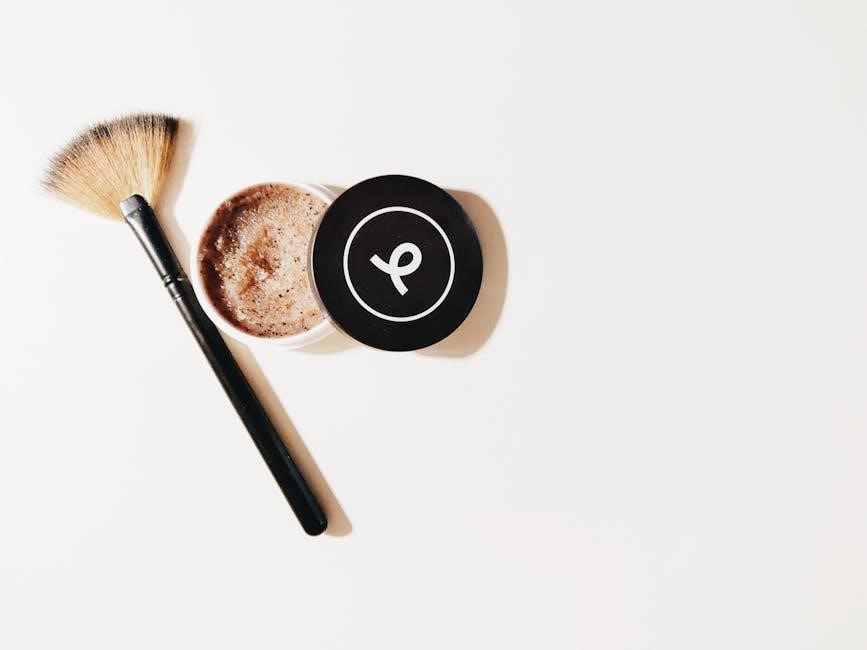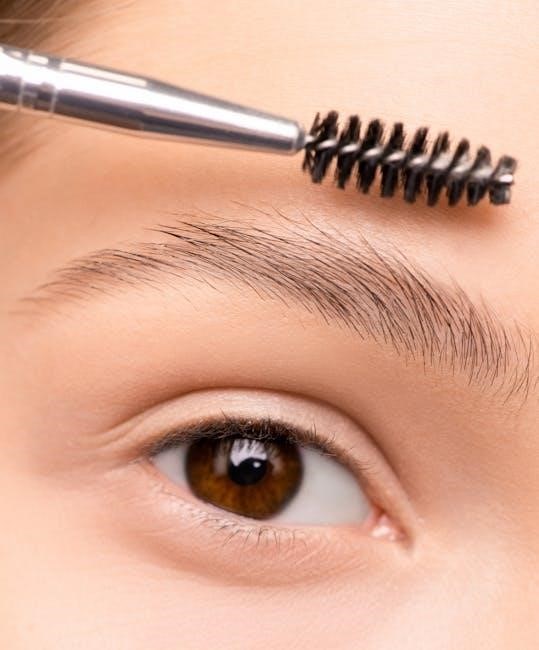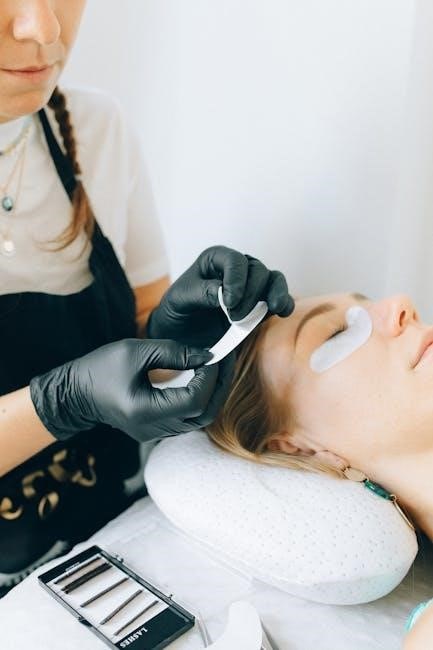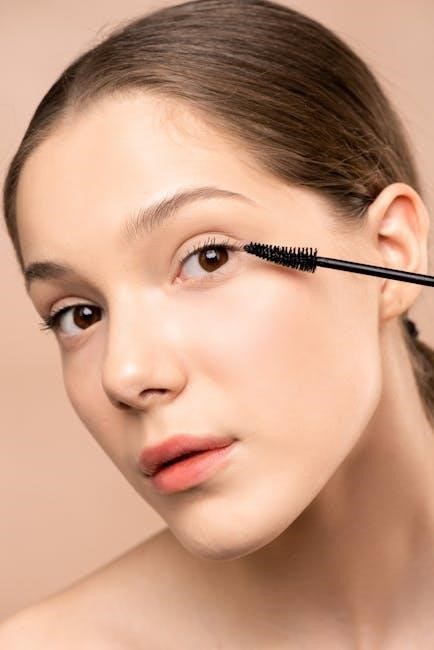Embark on a journey into the world of makeup brushes! Whether novice or expert, understanding makeup brushes is essential. They’re the cornerstone of any makeup kit. This guide details brush types, uses, and application techniques for a flawless finish, so you can level up your look!
Makeup brushes are vital tools for makeup application, offering precision and control that fingers simply can’t match. They enhance makeup’s appearance and longevity, making them a must-have in any beauty routine. This introduction will cover the world of makeup brushes, highlighting their importance and versatility.
From foundation to eyeshadow, each brush type serves a unique purpose, designed to work with specific products and techniques. Using the right brush can dramatically improve the application process, allowing for seamless blending, even coverage, and professional-looking results. Understanding the different brush types is key to mastering your makeup.
Furthermore, the quality of makeup brushes matters. Well-made brushes pick up and deliver color effectively, improving accuracy and reducing product waste. Investing in quality brushes can make a significant difference in your overall makeup look. So, let’s dive into the essentials and discover the perfect brushes for your needs!
Essential Face Brushes
Achieving a flawless complexion starts with the right tools. Essential face brushes are the foundation of any makeup routine, allowing for smooth and precise application of base products. These brushes help create an even canvas and enhance your features.
This section will cover the must-have face brushes, including those for foundation, concealer, powder, blush, and bronzer. We’ll discuss their specific uses, shapes, and application techniques, so you’ll be able to choose the best brush to suit your needs.
Understanding the function of each brush will help you create a polished look, whether you’re aiming for full coverage or a natural glow. Using the correct brush can make a big difference in the final result, ensuring your makeup looks seamless and professional. So, let’s explore the essential face brushes and unlock their potential!
Foundation Brush Types and Application
Foundation brushes are vital for achieving a smooth, even base. Several types exist, each offering unique benefits. Flat foundation brushes provide full coverage, while stippling brushes create an airbrushed effect. Buffing brushes are excellent for blending and achieving a natural finish.
When applying foundation, start at the center of the face and blend outwards. Use gentle, circular motions with a buffing brush, or stipple the foundation onto the skin with a stippling brush. For a flat brush, apply in short, even strokes.

Clean your foundation brush regularly to prevent buildup and ensure flawless application. Different brushes are better suited for different formulas, so consider the foundation’s texture when choosing your brush. With the right brush and technique, you can achieve a seamless, natural-looking base every time.
Concealer Brush: Spot Coverage Techniques
Concealer brushes are essential for precise spot coverage, targeting blemishes, dark circles, and imperfections. Different shapes cater to various needs. Small, pointed brushes are ideal for pinpoint concealing, while flat, wider brushes are suitable for larger areas like under the eyes.
For blemishes, gently dab concealer onto the area using a pointed brush, blending the edges for a seamless finish. When covering dark circles, use a flat brush to apply concealer in thin layers, blending outwards towards the cheekbone.
Always use a light hand to avoid a cakey appearance. Clean your concealer brush regularly to prevent bacteria buildup. With the right brush and technique, you can achieve flawless spot coverage and a naturally even complexion. Remember to choose a concealer shade that matches your skin tone for the best results, creating an invisible shield against imperfections.
Powder Brush: Setting and Finishing
Powder brushes are essential tools for setting makeup and achieving a flawless finish. Their primary function is to evenly distribute powder products, such as setting powder, blush, or bronzer, across the face. A good powder brush should be large, fluffy, and soft, allowing for a light and even application. Different types of powder brushes cater to various needs.
Large, rounded brushes are perfect for applying setting powder to the entire face, helping to reduce shine and prolong the wear of your makeup. Angled brushes are ideal for applying blush or bronzer to the cheeks and temples, allowing for precise placement and a sculpted look. To use a powder brush effectively, swirl it in the powder, tap off any excess, and then gently sweep it across your face in circular motions.
Remember to clean your powder brush regularly to prevent bacteria buildup and maintain its softness. With the right powder brush and technique, you can achieve a beautifully set and finished makeup look that lasts all day.
Blush Brush: Placement for Different Face Shapes
The blush brush is your best friend for adding a pop of color and dimension to your face. However, the right blush placement depends on your face shape. For round faces, apply blush along the cheekbones, angling upwards towards the temples, to create definition. Oval faces can pull off almost any blush placement, but a classic application on the apples of the cheeks works well.
Square faces benefit from blush applied in a circular motion on the apples of the cheeks to soften the angles. Heart-shaped faces should focus blush on the outer corners of the eyes and blend towards the temples to balance the wider forehead. Oblong faces can shorten the appearance of their face by applying blush horizontally across the cheeks.
Choose a blush brush that is soft, fluffy, and slightly angled for precise application and seamless blending. Experiment with different placements to find what flatters your unique face shape the most.
Bronzer Brush: Sculpting and Adding Warmth
A bronzer brush is a must-have for adding warmth, dimension, and a sun-kissed glow to your complexion. The key to successful bronzer application is choosing the right brush and using a light hand. Opt for a large, fluffy brush with soft bristles to ensure a diffused and natural-looking finish. Angled bronzer brushes are excellent for sculpting the cheekbones and jawline, while rounded brushes are ideal for all-over warmth.
To sculpt, apply bronzer in the hollows of your cheeks, blending upwards towards the temples. Focus on areas where the sun naturally hits, such as the forehead, nose, and chin. Remember to blend, blend, blend to avoid harsh lines and create a seamless transition between your bronzer and foundation.
With the right brush and technique, you can achieve a beautifully bronzed and sculpted look that enhances your natural features.
Essential Eye Brushes
Creating captivating eye looks requires the right tools. Eye brushes are designed for precise application and seamless blending, allowing you to achieve various effects, from subtle enhancements to dramatic transformations. Investing in a set of essential eye brushes is key to unlocking your creativity and mastering eye makeup artistry.
A basic set should include an eyeshadow brush for applying color to the lid, a blending brush for softening edges and creating smooth transitions, an eyeliner brush for creating precise lines, and a brow brush for defining and shaping your brows. Different shapes and sizes cater to specific techniques, so experiment to find what works best for your eye shape and desired look.
With the right eye brushes, you can effortlessly create stunning eye makeup looks that enhance your natural beauty and express your unique style.
Eyeshadow Brush: Application and Blending
Eyeshadow brushes are the workhorses of any eye makeup routine, crucial for applying color and achieving seamless blending. Different shapes and sizes serve distinct purposes, from packing pigment onto the lid to creating soft, diffused edges. A flat, firm brush is ideal for applying eyeshadow to the lid, allowing for even color distribution and buildable intensity. For blending, a fluffy, tapered brush is key to softening harsh lines and creating a smooth transition between shades.
When applying eyeshadow, gently pat the color onto the lid rather than sweeping, to minimize fallout and maximize pigment payoff. Use windshield wiper motions with a blending brush to seamlessly blend shades together, creating a gradient effect. Experiment with different brush shapes and techniques to discover what works best for your eye shape and desired look.
With the right eyeshadow brush and technique, you can create endless eye-catching looks.
Eyeliner Brush: Creating Precise Lines
Eyeliner brushes are essential tools for achieving defined eyes. Angled, fine-tipped brushes create sharp lines, perfect for gel or cream liners. Small, pointed brushes excel at smudging for a smoky effect. Choose synthetic bristles for liquid or gel formulas, as they resist product absorption. When creating a wing, start with a thin line at the inner corner, gradually thickening towards the outer corner.
Use short, controlled strokes for precision. For a softer look, smudge the liner with a cotton swab or blending brush. Clean your eyeliner brush after each use to prevent product buildup and maintain a sharp tip. Experiment with different angles and pressures to achieve various eyeliner styles, from classic wings to tightlining;

Mastering the eyeliner brush unlocks endless eye-enhancing possibilities, so you can create professional looks.
Brow Brush: Defining and Shaping Brows

Brow brushes are indispensable for achieving perfectly sculpted eyebrows. An angled brow brush, with its firm, slanted bristles, is ideal for applying powder or pomade to fill in sparse areas and define the brow shape. A spoolie brush, resembling a mascara wand, is used to groom brow hairs, blend product, and soften harsh lines for a natural look. Start by brushing your brow hairs upwards and outwards with the spoolie to reveal their natural shape.
Then, using the angled brush, apply your chosen brow product in short, feathery strokes, following the natural direction of hair growth. Focus on filling in gaps and defining the arch. Finish by blending the product with the spoolie to create a soft, diffused effect. Regularly cleaning your brow brush will prevent product buildup and ensure precise application.
Mastering the art of the brow brush will give you the perfect brows and will frame your face beautifully.
Brush Care and Maintenance
Maintaining your makeup brushes is crucial for hygiene, performance, and longevity. Regular cleaning removes makeup residue, oils, and bacteria, preventing skin irritation and breakouts. Dirty brushes can also hinder makeup application, leading to streaks and uneven blending. Ideally, clean your brushes at least once a week, or more frequently if you use them daily.
Use a gentle brush cleanser or mild soap and water to wash the bristles. Swirl the brush in the cleanser, rinse thoroughly, and reshape the bristles. Lay the brushes flat to dry on a clean towel, avoiding direct sunlight or heat, which can damage the bristles. Proper storage protects brushes from dust and damage. Store them in a brush holder or case, keeping them upright to maintain their shape and prevent bristles from bending. Investing in brush care ensures flawless makeup application and extends the life of your beloved tools.
Cleaning Your Makeup Brushes
Cleaning your makeup brushes is a crucial step in maintaining both your skin’s health and the performance of your makeup. Dirty brushes harbor bacteria, oils, and old makeup, which can lead to breakouts and skin irritations. Furthermore, residue buildup can affect the color payoff and blending ability of your brushes, making your makeup application less effective.
To clean your brushes, start by rinsing the bristles under lukewarm water, being careful not to get water inside the ferrule (the metal part connecting the bristles to the handle). Use a gentle brush cleanser or mild shampoo, and swirl the brush in the cleanser to create a lather. Rinse thoroughly until the water runs clear. Gently reshape the bristles and lay the brushes flat on a towel to dry, away from direct sunlight or heat. Regular cleaning will keep your brushes fresh, hygienic, and performing at their best.
Storing Makeup Brushes Properly
Proper storage of your makeup brushes is essential for maintaining their shape, cleanliness, and longevity. After cleaning and drying your brushes, avoid tossing them haphazardly into a drawer or makeup bag. This can damage the bristles and lead to premature wear and tear.
Ideally, store your brushes in a brush holder or organizer, with the bristles facing upwards. This prevents the bristles from bending or splaying out of shape. If you don’t have a brush holder, consider using a makeup bag or container with individual slots or compartments to keep the brushes separated. Avoid storing brushes in humid environments, such as the bathroom, as this can promote bacteria growth. When traveling, use a brush roll or case to protect your brushes from damage. Proper storage will keep your brushes in top condition and extend their lifespan.
Choosing the Right Brushes
Selecting the right makeup brushes can significantly impact your makeup application. The ideal brushes will depend on your individual needs, preferences, and the types of makeup you typically use. Consider the size, shape, and density of the brush head, as these factors influence the product’s application and blending.
Beginners may find it helpful to start with a basic set of essential brushes, gradually expanding their collection as they gain experience. Research different brands and read reviews to assess the quality and durability of the brushes. Don’t be afraid to invest in high-quality brushes, as they will last longer and provide better results. Ultimately, the best way to choose the right brushes is to experiment and find what works best for you. Think about what you want to achieve with your makeup look, and let that guide your choice!
Bristle Types: Natural vs. Synthetic
When selecting makeup brushes, understanding the difference between natural and synthetic bristles is essential. Natural bristles, typically made from animal hair, are porous and excel at picking up and distributing powder-based products. They have a cuticle that grabs onto the product, allowing for a more diffused and blended application. However, natural brushes can be more prone to shedding and may not be suitable for cream or liquid products, as they can absorb the product and become difficult to clean.

Synthetic bristles, on the other hand, are made from man-made fibers like nylon or taklon. They are non-porous, making them ideal for applying cream, liquid, and gel products, as they won’t absorb the product. Synthetic brushes are also easier to clean and are a more hygienic option, as they are less likely to harbor bacteria. Ultimately, the choice between natural and synthetic bristles depends on your personal preferences and the types of makeup products you use.

